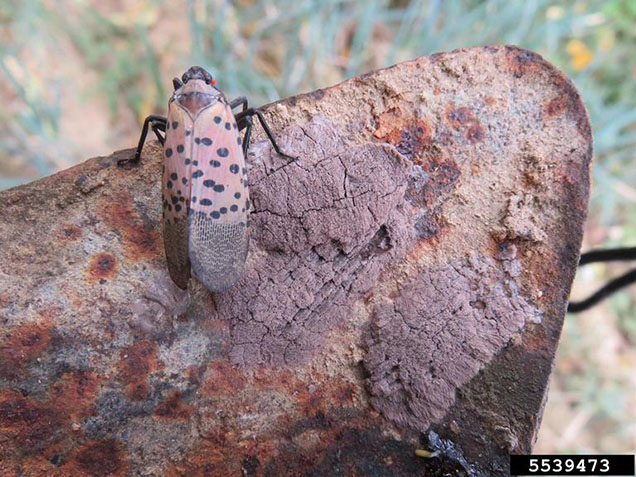Stopping the Spread of the Spotted Lanternfly
A research collaboration between Drexel College of Engineering and the Academy of Natural Sciences
If you’re reading this, you’ve probably already seen swarms of spotted lanternflies in your neighborhood. Spotted lanternflies feed on the sap of grapes, fruit trees, hops, and hardwoods, among other plants. Altogether, the crops that lanternflies threaten are worth billions and billions of dollars in Pennsylvania alone. On top of that, homeowners and farmers who use more pesticides to kill lanternflies may accidentally poison pollinators like honeybees, who are already declining in numbers.
The Academy of Natural Sciences and researchers at Drexel's College of Engineering are working to stop the spread of the spotted lanternfly by developing technology to automatically detect lanternfly eggs.
Lanternflies can “hitchhike” long distances by laying their eggs on vehicles or cargo, and this is almost certainly how they arrived in Pennsylvania. Right now, businesses who travel in and out of the lanternfly infestation area are required to inspect for eggs on vehicles and cargo. However, it can be difficult or even dangerous for humans to look for eggs in some places, such as underneath trains and shipping containers. Using cameras and computer vision to inspect for egg masses could be safer, cheaper, and more effective than relying on individual humans.
You can help this project by contributing photos of lanternfly eggs and egg masses!
Computers learn to recognize objects in photos by being shown hundreds or thousands of examples. In artificial intelligence research, this is called “training data”. More training data makes algorithms more accurate. This means that sharing more pictures of lanternfly eggs improves the technology faster.
What to do:

New egg clusters and an adult spotted lanternfly on garden tool
photo: Kenneth R. Law, USDA APHIS PPQ, Bugwood.org

Partially covered egg mass
photo: Emelie Swackhamer, Penn State University, Bugwood.org
If you see eggs (either with or without the mud-like covering) in your neighborhood, take a picture of them. We are especially looking for pictures of eggs on vehicles and other metal objects. Use the “Rule of Thirds” to make sure the eggs are big enough in your picture.

Then, take a picture a few inches away of an area without eggs. This picture with no eggs is called a “control”, and it helps teach the computer what to look for. After you take the picture, destroy the eggs! To destroy eggs, either scrape them into a plastic baggie, seal, and trash; or crush the eggs with a fingernail or tool until you feel the pop.
To share your pictures:
- Click on the Google Photos Album Link
- Click the 'add photos icon

- Click 'Select from Computer/Phone'
- Find your image and select
- Done! Make sure you destroy the eggs!
Help us spread the word! Download a flyer here.
Questions? Contact Prof. Maureen Tang or Prof. Antonios Kontsos.